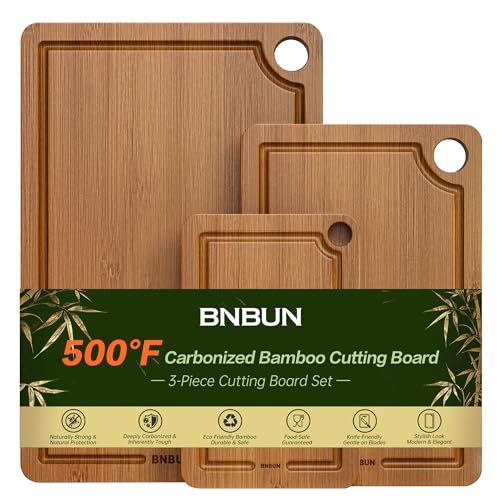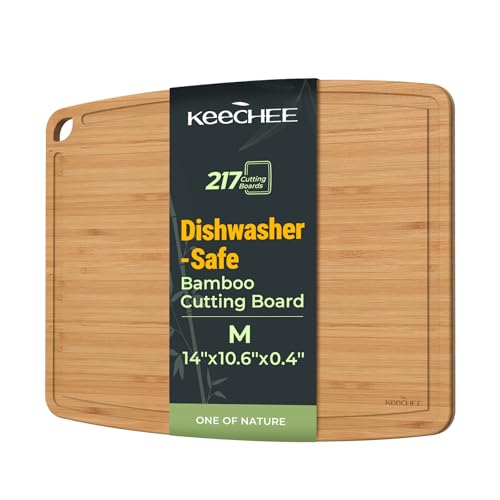As we dive into the world of coffee, there’s a chilled treasure that’s been capturing hearts and taste buds alike: cold brew. It’s not just your average iced coffee; it’s a smoother, richer experience that turns a simple coffee break into a moment of pure bliss. But not all beans are created equal when it comes to crafting the perfect cold brew.
We’ve embarked on a flavorful journey to uncover the best coffee for cold brew, navigating through the maze of roasts, origins, and blends. Why, you ask? Because we believe that everyone deserves to sip on a cold brew that’s nothing short of spectacular. So, let’s get ready to elevate our coffee game together, discovering the beans that will transform our cold brew experience from good to unforgettable.
Key Takeaways
- Choose Arabica Beans for Superior Cold Brew: For a smooth and flavorful cold brew, opt for Arabica coffee beans over Robusta, thanks to their complex flavor profiles and reduced bitterness.
- Bean Origin Matters: The origin of the coffee beans influences the final taste of your cold brew, with African beans adding bright, fruity notes, South American beans offering chocolatey smoothness, and Central American beans providing a sweet balance.
- Roast Profile Affects Flavor: Selecting the right roast level, from light to dark, can significantly alter your cold brew’s flavor, with light roasts bringing a zestier taste, medium roasts providing a well-balanced flavor, and dark roasts contributing a rich, deep taste.
- Whole Beans Ensure Freshness: Using whole coffee beans and grinding them just before brewing can vastly improve the freshness and flavor of your cold brew, allowing for a customizable taste experience.
- Coarse Grind is Key: A coarse grind size is crucial for cold brew, as it prevents over-extraction and bitterness, ensuring a smoother, more enjoyable drink.
- Storage and Serving Techniques Enhance Experience: Properly storing cold brew in the refrigerator can maintain its quality for up to two weeks, while diluting with water or milk and serving over ice amplifies its inherent smooth and rich flavors.
Understanding Cold Brew Coffee
What Is Cold Brew?
Diving into the essence of cold brew, it’s crucial to distinguish it from its coffee counterparts. Cold brew is made by steeping coarsely ground coffee beans in cold water for an extended period, usually 12 to 24 hours, and then straining it to produce a concentrate. This method, unlike traditional brewing techniques, extracts the flavors and caffeine from the coffee beans without exposing them to heat. The result is a smooth, rich coffee concentrate that can be diluted with water or milk to create a refreshing and less acidic beverage. Selecting the best coffee for cold brew plays a pivotal role in achieving the perfect balance of taste and aroma, ensuring an exceptional cold brew experience.
Why Choose Cold Brew Over Other Methods?
Choosing cold brew over other brewing methods offers several unique advantages. Firstly, the cold brewing process tends to draw out a smoother, sweeter flavor from the coffee beans, mitigating the bitterness and acidity often found in hot brewed coffee. This milder acidity makes cold brew coffee gentler on the stomach, a significant benefit for those sensitive to acidic foods and beverages. Additionally, cold brew concentrate is versatile; it serves as a ready-to-drink beverage or a base for a variety of coffee drinks, hot or cold. The extended shelf life of cold brew concentrate—lasting up to two weeks when refrigerated—ensures that coffee enthusiasts can enjoy a premium coffee experience without daily brewing. This convenience, combined with the exquisite flavor profile achievable with the best coffee for cold brew, positions it as a superior choice for both discerning coffee lovers and casual drinkers alike.
Selecting the Best Coffee Beans for Cold Brew
The Importance of the Bean’s Origin
Understanding the origin of coffee beans plays a pivotal role in selecting the best coffee for cold brew. Different regions impart unique flavors and characteristics to the beans. For instance, African beans often exhibit bright, fruity notes that can add a delightful twist to your cold brew, making each sip a vibrant experience. Conversely, South American beans typically offer a smoother, more chocolatey profile, perfect for those who prefer their coffee rich and less acidic. Central American beans strike a balance, offering hints of sweetness and a mild acidity that enhances the cold brew’s complexity. By paying attention to the bean’s origin, we can ensure a cold brew that’s not only refreshing but also rich in flavors that cater to our preferences.
Arabica vs. Robusta for Cold Brew
When it comes to selecting the best coffee for cold brew, the choice between Arabica and Robusta beans is crucial. Arabica beans are renowned for their smooth, complex flavor profiles, featuring a range of sweet, fruity, and floral notes. These beans are ideal for cold brew, as the brewing process highlights their inherent sweetness and reduces bitterness, resulting in a smooth, enjoyable drink. Robusta beans, on the other hand, are known for their bold, robust flavor and higher caffeine content. However, they tend to produce a harsher taste, which might not be the best match for the delicate nuances of cold brew. Thus, we often recommend Arabica beans for those seeking a superior cold brew experience.
The Role of Roast Profile in Cold Brew Flavor
The roast profile of coffee beans significantly influences the flavor of the cold brew. Light roasts, with their brighter, acidic notes, can bring a lively zest to your cold brew, ideally suited for those who appreciate a sharper taste. Medium roasts offer a harmonious blend of acidity and body, presenting a well-rounded flavor that enhances the cold brew’s smoothness. Dark roasts, known for their bold, smoky flavors, contribute a richness and depth to the cold brew, often with hints of chocolate or caramel. Choosing the correct roast level can elevate your cold brew from good to exceptional, tailoring the beverage to your personal taste preferences. As we continue our exploration, our focus remains steadfast on helping you select the best coffee for cold brew, ensuring a delightful and satisfying beverage, no matter your choice.
Pre-Ground vs. Whole Bean Coffee
In our journey to brew the best cold brew coffee, understanding the differences between pre-ground coffee and whole beans becomes crucial. Both options have their unique advantages and disadvantages, especially when it comes to making cold brew. Let’s dive deeper into the distinctions to help decide which might be the best coffee for your cold brew.
Pros and Cons of Pre-Ground Coffee
Choosing pre-ground coffee can seem like a convenient option for many. After all, it saves the time and effort required to grind beans before brewing. For those with a busy lifestyle or without access to a quality grinder, pre-ground coffee offers an easy way to enjoy cold brew without extra hassle. Additionally, consistency in grind size, which is crucial for a balanced extraction in cold brew, is guaranteed.
However, pre-ground coffee has its downsides. The primary concern is freshness. Once coffee is ground, it begins to lose its flavors and aromas due to oxidation and moisture exposure. This process is significantly accelerated for pre-ground coffee, potentially leading to a less flavorful cold brew. Given that cold brewing already requires an extended steeping time, using pre-ground coffee might result in a brew that’s lackluster in taste.
Why Whole Beans Might Be Better for Cold Brew
When aiming for the best coffee for cold brew, whole beans stand out for their freshness and potential for customization. Grinding beans just before brewing ensures the fullest possible flavor and aroma, capturing the coffee’s true essence. This freshness can significantly elevate your cold brew experience, offering a complex, vibrant cup that pre-ground simply can’t match.
The ability to customize grind size with whole beans is another advantage. While a coarse grind is typically recommended for cold brew to prevent over-extraction, the flexibility to experiment with different grind sizes lets you fine-tune the flavor to your preference.
Whole beans also cater to a wide variety of tastes, given the sheer diversity available. You can choose beans from specific regions, featuring distinct flavor profiles, and roast levels, from light to dark, depending on the taste profile you’re aiming for in your cold brew.
Choosing whole beans might require a bit more effort and investment in a good quality grinder, but it pays off in the quality and personalization of your cold brew. In essence, if you’re looking to craft the best possible cold brew, beginning with whole beans could provide a more rewarding and flavorsome brewing experience.
Grind Size and Texture for the Perfect Cold Brew
The Impact of Grind Size on Extraction
Grind size plays a pivotal role in crafting the perfect cold brew coffee. In the cold brewing process, the water and coffee grounds interact over an extended period, typically 12 to 24 hours. This prolonged extraction time means that the grind size can significantly influence the texture, flavor, and overall quality of the cold brew.
A finer grind might seem like it would offer more flavor due to increased surface area, but it can often lead to over-extraction in cold brew methods. This results in a bitter and gritty texture, overshadowing the best coffee for cold brew’s natural sweetness and smooth profile. Conversely, a coarse grind allows for a slow, even extraction, which is ideal for cold brew. This ensures that the water filters through the coffee grounds at a rate that extracts the flavors optimally, achieving a balanced and nuanced taste.
Finding the Right Grind for Cold Brew
For cold brew, the consensus among coffee enthusiasts and experts alike is to opt for a coarse grind. Picture the texture of coarse sea salt; this is the ideal size for allowing water to circulate through the grounds, maximizing flavor extraction without pulling through the bitter compounds.
Using the best coffee for cold brew with a coarse grind will help achieve a concentrate that is rich, smooth, and versatile, serving as a solid base for various cold coffee beverages. This grind size ensures that the cold brew retains the distinctive characteristics of the coffee bean, including those unique flavors influenced by its origin and roast profile.
To sum up, selecting a coarse grind is crucial for preparing the best cold brew. It facilitates a balanced extraction process, resulting in a final product that’s not only smoother and sweeter but also less acidic and more enjoyable. For the aficionados and casual drinkers exploring the realms of cold brew, understanding the significance of grind size and texture sets the foundation for a superior cold brew experience.
Brewing Methods for Cold Brew Coffee
Immersion Cold Brew Technique
Immersion is our go-to method for making the best cold brew coffee. This technique involves steeping coarsely ground coffee beans in cold water for an extended period, usually 12 to 24 hours. We prefer this method due to its simplicity and the rich, full-bodied flavor it produces. To achieve the best results, we combine one part coffee to four parts water in a large jar or a French press. After the steeping process, we forcefully strain the mixture through a coffee filter to remove the grounds. This approach ensures that the water has enough time to fully extract the flavors from the coffee, creating a concentrate that’s silky, smooth, and remarkably versatile. Whether diluted with water or milk, immersion cold brew coffee delights with its mild acidity and complex flavor profile, making it a favorite among cold brew enthusiasts.
Slow Drip Cold Brew Method
The slow drip cold brew method, also known as the Kyoto or Dutch method, offers a unique alternative for crafting the best coffee for cold brew. This intricate process involves slowly dripping cold water over a bed of coffee grounds for several hours. Typically, we use a special slow drip brewer, which allows us to precisely control the rate of water flow over the coffee grounds. A distinct advantage of the slow drip method is its faster brewing time compared to immersion, often completed in about 3 to 5 hours. The coffee produced is characteristically lighter in body but with a nuanced flavor spectrum that showcases the brighter, more delicate notes of the coffee. This method’s intricate setup and the dynamic flavor profile it creates appeal to those looking to explore the diverse taste possibilities in cold brew coffee. Whether one prefers the robust intensity of the immersion technique or the subtle complexity of the slow drip method, both strategies offer exciting ways to enjoy the best coffee for cold brew.
Top Picks for Best Coffee For Cold Brew
Building on the rich insights shared about cold brew’s exceptional taste, the importance of bean selection, and the various brewing methods that enhance this beloved beverage, we now dive into our top picks for the best coffee for cold brew. We’ve curated a list tailored for both specialty coffee aficionados and those who prefer the convenience of commercially available blends. Let’s explore these options to help you find the perfect coffee for your cold brew journey.
Specialty Coffee Brands
When it comes to selecting the best coffee for cold brew, specialty coffee brands offer a remarkable variety of beans that promise a superior brewing experience. We’ve identified several brands known for their high-quality beans, which are perfect for cold brew enthusiasts seeking a distinct taste and aroma profile.
- Single Origin Coffees: These beans come from specific regions known for their unique flavor profiles. For cold brew, we recommend looking for single-origin beans from Ethiopia or Colombia, as they tend to produce a sweet, fruity, and floral cold brew that’s incredibly refreshing.
- Artisan Roasters: Small-batch roasters often have a rotation of seasonal blends that are carefully roasted to highlight their natural flavors. Beans from artisan roasters are perfect for those who enjoy experimenting with different taste notes in their cold brew.
- Organic and Fair Trade Options: For the environmentally and ethically conscious drinker, there are plenty of specialty brands that offer organic and fair trade-certified beans. These not only support sustainable farming practices but also ensure a guilt-free enjoyment of your cold brew.
Choosing beans from specialty coffee brands allows you to explore a wide range of flavors, opening up a world of possibilities for your cold brew experience.
Commercially Available Cold Brew Blends
For those who prioritize convenience without compromising on taste, there are several commercially available cold brew blends that stand out for their quality and flavor.
- Pre-Ground Cold Brew Blends: Many brands offer pre-ground coffee specifically formulated for cold brew. These blends are designed to yield a smooth, well-balanced beverage, making them a practical choice for those looking to simplify their brewing process.
- Ready-to-Brew Pouches: An even more convenient option is ready-to-brew cold brew pouches. These pouches contain pre-ground coffee in filter bags that you simply steep in water, eliminating the need for any grinding or special equipment.
- Supermarket Finds: Several high-quality cold brew blends can be found on supermarket shelves. Brands like Stumptown, Blue Bottle, and Chameleon have been consistent favorites, offering robust and versatile options that cater to a wide array of cold brew preferences.
Whether you’re venturing into the world of specialty coffee or seeking the ease of commercially available blends, there’s a plethora of options to choose from. Our top picks for the best coffee for cold brew ensures there’s something for everyone, guaranteeing a delicious and satisfying cold brew experience.
How to Store and Serve Cold Brew Coffee
After exploring the best coffee for cold brew, it’s crucial to know how to store and serve it properly. Storing and serving cold brew correctly can significantly impact its taste and freshness. We’ll guide you through the best practices for storage and share some tips on how to serve cold brew coffee to enhance its flavor.
Best Practices for Storage
Keeping your cold brew fresh starts with proper storage. After brewing, pour the cold brew concentrate into a clean, airtight container. Glass containers are ideal because they don’t absorb flavors and make it easy to see how much coffee you have left. Store the concentrate in the refrigerator immediately. Cold brew concentrate can be kept in the fridge for up to two weeks without significant loss of quality. However, for the best flavor, we recommend consuming it within the first week.
For those who brew large quantities, consider portioning the cold brew into smaller containers or ice cube trays. Freezing cold brew in ice cube trays allows you to thaw exactly the amount you need, preventing waste and ensuring your coffee remains as fresh as possible. Remember, thawed cold brew should be consumed within a day for optimal taste.
Tips for Serving Cold Brew Coffee to Enhance Flavor
Serving cold brew coffee isn’t just about pouring it over ice. For an enhanced coffee experience, follow these tips:
- Dilute with Water or Milk: Depending on your preference, cold brew concentrate needs to be diluted. A good starting ratio is 1:1, but feel free to adjust to taste. Using cold, filtered water or milk (dairy or plant-based) enhances the smooth, rich flavors of your cold brew.
- Serve Over Ice: Add ice to a glass before pouring in your diluted cold brew. This keeps the coffee cold and refreshing without diluting the flavor as the ice melts slowly.
- Experiment with Flavors: Cold brew is versatile. Try adding simple syrups, spices like cinnamon or nutmeg, or even a dash of vanilla extract to add a unique twist to your coffee.
- Avoid Heat: If you prefer your coffee warm, avoid microwaving cold brew. Instead, gently warm your diluted cold brew over low heat. This preserves the delicate flavors without introducing bitterness.
By following these storage and serving suggestions, your cold brew coffee will always taste its best, fully showcasing the quality of the beans you’ve chosen. Whether you’re enjoying a glass on a hot day or looking for a smooth, flavorful base for a coffee cocktail, these tips ensure your cold brew is enjoyable to the last drop.
Conclusion
We’ve journeyed through the art of selecting the perfect coffee for cold brew, from understanding the brewing process to exploring the finest beans and blends. Whether you’re drawn to the unique flavors of specialty single-origin coffees or the convenience of ready-to-brew options, there’s a perfect match for every cold brew lover out there. Remember, the key to a sensational cold brew lies not just in the beans but also in how you store and serve your brew. By following our tips, you’ll ensure every sip is as delightful as the last. So go ahead, experiment with our recommendations, and find your cold brew soulmate. Here’s to many refreshing moments ahead!




















